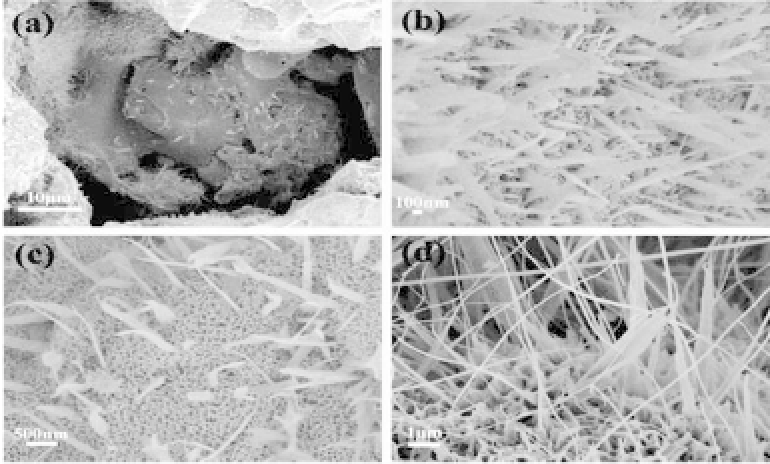Biomedical Engineering Reference
In-Depth Information
a titanate nanoskeleton layer forms on the exposed surface in the
early stage via areaction betweennative titaniumoxideand NaOH.
As time elapses, some titanate nanobelts and nanowires nucle-
ate and grow on the skeleton. Finally, a hierarchical Ti-based metal
scaffold is formed. The typical surface morphology of this hierarchi-
cal structure is exhibited in Fig. 3.8. The formation of nano titanates
on titanium plates and titanium dioxide powders has previously
been reported, but there is still a dispute on the phase composition
of these nano titanates. Peng and Chen
27
ascribe the formation of
titanates to the direct reaction between Ti and the NaOH aqueous
solution when the Ti plate is immersed in a concentrated alkaline
solution.The reaction isshown in thefollowing equation:
27
6Ti
+
2NaOH
+
11H
2
O
→
Na
2
Ti
6
O
13
+
12H
2
(g) (3.1)
When the starting material is titanium dioxide, Sun
et al
. attribute
the formation of nano titanates to the following hydrothermal
reaction:
28
4TiO
2
+
2NaOH
→
Na
2
Ti
4
O
9
+
H
2
O
(3.2)
Figure 3.8.
Morphologies of a hydrothermally treated 3D porous NiTi
scaffold. (a) Typical surface morphology of an exposed internal pore after
treatment at 60
◦
C for 240 hours; (b) Morphology of the wall of the exposed
pore in (a); (c) Morphology of the bottom of the pore in (a); (d) Gen-
eral growth condition of nanowires/nanobelts on the exposed surface after
treatment at 60
◦
C for240 hours.
16









Search WWH ::

Custom Search